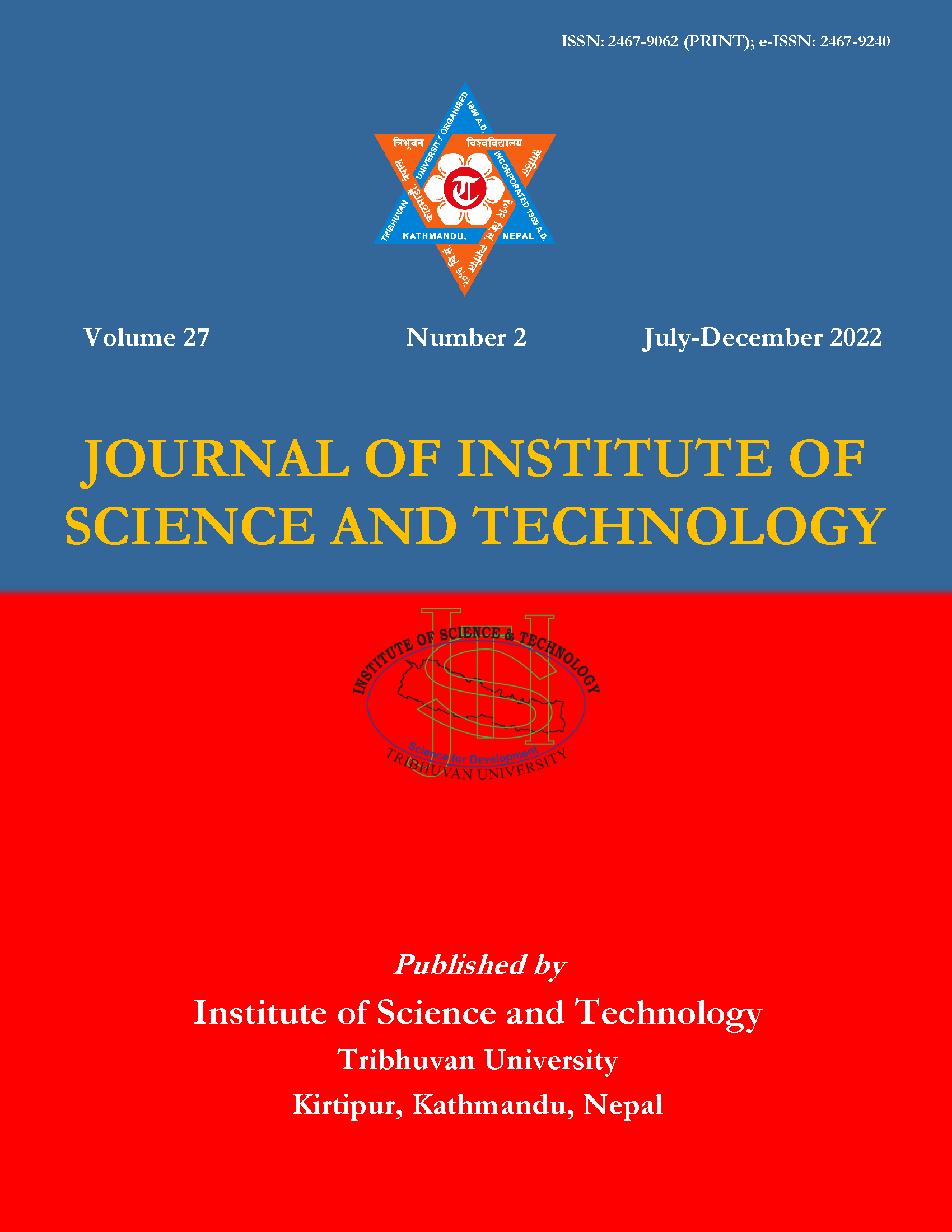Prevalence of Gastrointestinal Helminth Parasites in Livestock of Kavrepalanchok
DOI:
https://doi.org/10.3126/jist.v27i2.39465Keywords:
Cestodes, host, livestock, nematodes, trematodesAbstract
The study was carried out in Mandandeupur Municipality, Kavrepalanchok from December 2018 to May 2019. A total of 131 fecal samples of livestock were collected and examined under a microscope by using direct smear and sedimentation technique. Overall, 65.65% of samples were found positive with various types of gastrointestinal helminth parasites. Samples were collected from cows, buffaloes, and goats. Among the samples collected, the highest prevalence (76.47%) was observed among the cows and the least was found among buffaloes (57.14%) but was found statistically insignificant (p>0.05). The study revealed a prevalence of nematodes (74.47%), cestodes (7.70%) and trematodes (3.10%). The prevalence of Strongylus sp. was found highest (35.88%) and the prevalence of Cooperia sp., Hymenolepsis sp., Enterobius sp. and Fasciola sp. were found similar (0.8%). In sex wise study, both males and females of livestock were found about equally infected. In the same way, the prevalence of gastrointestinal helminths was found about similar in both the winter and summer seasons. In age wise prevalence, the adult was more infected (68.27%) with gastrointestinal helminth parasites than the young (55.55%) which was statistically insignificant (p>0.05). In the present study, single infection was found highest (47.29%) and multiple infections were found least (2.29%). The samples collected from non-dewormed livestock were found highly (71%) positive for gastrointestinal helminths. The relation between deworming and prevalence was statistically significant (p<0.05). Only 37.25% of farmers maintain the cleanliness of the shed by removing feces from the animal shed every day and only 23.53% of farmers know about the mode of transmission of gastrointestinal helminths in livestock.
Downloads
Downloads
Published
How to Cite
Issue
Section
License
Copyright (c) 2022 Institute of Science and Technology, T.U.

This work is licensed under a Creative Commons Attribution-ShareAlike 4.0 International License.
The views and interpretations in this journal are those of the author(s). They are not attributable to the Institute of Science and Technology, T.U. and do not imply the expression of any opinion concerning the legal status of any country, territory, city, area of its authorities, or concerning the delimitation of its frontiers of boundaries.
The copyright of the articles is held by the Institute of Science and Technology, T.U.




